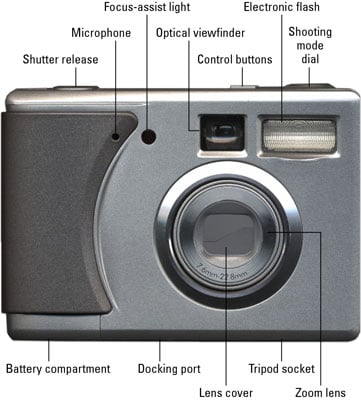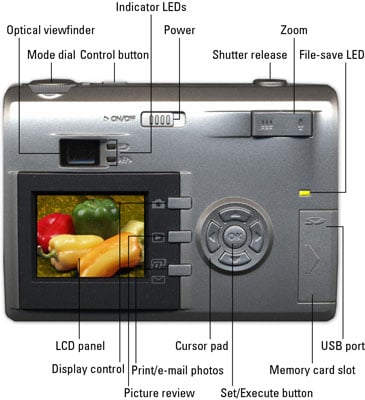If you’re new to digital cameras, you might be wondering what all those parts — the buttons, LEDs, and windows — are for. Here’s a quick introduction to the key components of the average non-SLR digital camera:


Shutter button: Press this button all the way to take a picture.
Control buttons: Adjust various camera settings.
Shooting mode dial: Change among different scene modes, adjust exposure choices, and so on.
Microphone: Capture audio for movie clips and voice annotations, or even activate a sound-triggered self-timer.
Focus-assist light: Helps the camera focus in dim lighting conditions.
Electronic flash: Provides addition light to your scene.
Optical viewfinder: To frame and compose your picture.
Zoom lens and control: Magnifies or reduces the size of the image.
Tripod socket: Allows you to attach the camera to a firm support.
Docking port: Can be used to transfer photos, recharge the batteries, make prints, or perform other functions.
Battery compartment: Contains the cells that power the camera.
Power switch: Turn the camera on or off.
Indicator LEDs: Show the camera’s status.
LCD (liquid crystal display) panel: The camera’s display.
Display control/Menu button: Controls the amount of information shown in the LCD and menus.
Picture review: Press this button to review the pictures you’ve already taken.
Cursor pad: Navigate menu choices.
Set/Execute button: Activate a feature or set a menu choice to the current selection.
Memory card slot: Accepts digital memory cards.
USB port: Access for a USB cable.
File-save LED: This light usually lights up to indicate that an image is being saved to the memory card.

